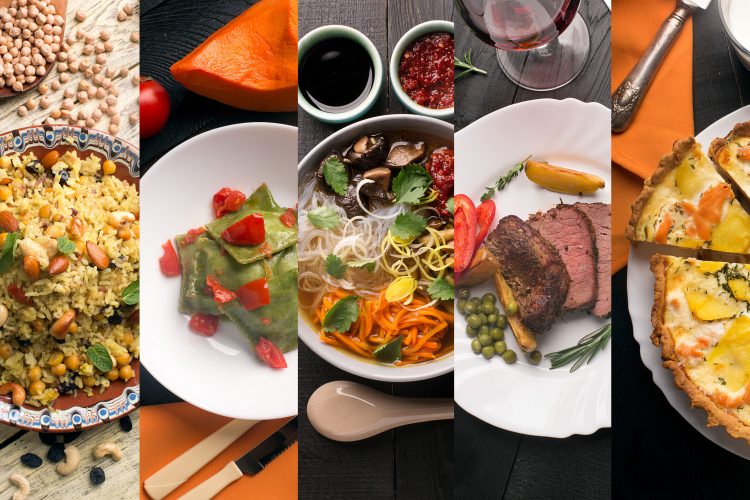What drives the food on our plates?
- Like
- Digg
- Del
- Tumblr
- VKontakte
- Buffer
- Love This
- Odnoklassniki
- Meneame
- Blogger
- Amazon
- Yahoo Mail
- Gmail
- AOL
- Newsvine
- HackerNews
- Evernote
- MySpace
- Mail.ru
- Viadeo
- Line
- Comments
- Yummly
- SMS
- Viber
- Telegram
- Subscribe
- Skype
- Facebook Messenger
- Kakao
- LiveJournal
- Yammer
- Edgar
- Fintel
- Mix
- Instapaper
- Copy Link
Posted: 17 February 2021 | Bethan Grylls (New Food) | No comments yet
Bethan Grylls explores how our cultural backgrounds and life experiences influence our preferences when it comes to the food we love.


Inspired by the interviews that you’ll find as you leaf through the pages of our latest issue (#1 2021), I was keen to explore the idea of how nations have evolved different cuisines in this column. Obviously, this is somewhat of an ambitious topic to tackle in a mere 600 words, so I’m afraid the history lesson is on hold for now; but I do want to touch on this interesting subject in the infinitesimal space I have…
Terrain, fauna, climate and flora have all contributed to the development of regional cuisines. For example, the climate in Greece is particularly suited to drought-tolerant plants that can grow on hillsides, such as olives and grape vines1 – which feature regularly on the regions’ plates. In addition, cultural influences such as religion have inspired the food we have become accustomed to. For example, the Muslim scripture known as the Qur’an states that meat must be treated in a certain way before consumption.2
As members of the food/drink industry, you’ll be familiar with the phrase ‘consistency is key’. When you buy the same loaf of bread as you did last week, as a consumer, you expect it to look and taste the same. A different experience can potentially mean loss of future sales. However, when a company expands across seas, consistency becomes more complex.
In an interview with Pizza Hut (found on page 40 within the latest issue), New Food hears how the brand, which started in the US, had to devise ways of delivering the same tasting pizza across the world, while recognising and working within the boundaries of differing regulations and importation rules, and being considerate of religious beliefs. In some instances, such parameters require businesses to alter ingredients or processes – learn more about Pizza Hut’s experience in the article.
Similarly, a nation’s taste preferences will dictate certain nuances within a brand’s offering. When I discussed this idea with Jose Alves from Old El Paso (see Issue #1 2021, page 4), he agreed that although the business aims to provide its customers with authentic Mexican flavours, certain adjustments have been necessary to serve particular markets. For example, the introduction of a non-spicy range for Brits.
Our cultural influences and life experiences can also explain why certain flavours are adored in one area and detested in another. So while salty liquorice ice cream may not seem appealing in the US, in Iceland it’s considered a treat.3
Britain (where I live) has an interesting history with food and, arguably, its cuisine is quite hard to define. Roast beef and fish and chips will probably come to mind if I asked you to describe it; but as the nation has become more ethnically diverse, so too has its cuisine. We take considerable inspiration from regions such as South America, Asia and mainland Europe; in fact, for a long time, curry has been regarded as the country’s favourite food. Former UK Foreign Secretary, Robin Cook, even described it as Britian’s national dish.4 However, as Alves highlighted, the ways in which Brits enjoy a certain dish may be somewhat different to the society from which it originates.
Another interesting consideration is the influence of language and communication; an insight that was highlighted to me by Paul Baker from St Pierre Groupe (Issue #1 2021, page 36). Baker explained that while their products are uniform/consistent across the globe, the manner of communication with consumers is unique to the location.
What is also noteworthy about the St Pierre Groupe is how it has positioned itself; it’s a Manchester-based company making French baked goods for the US (among other areas). This unusual setup works, according to Baker, because like the US the brand views this food as a tourist might and understands the narrow scope through which it is perceived.
So at a time when much of the global community cannot physically be together, let’s celebrate the ways in which our differing cultures and cuisines can.
References
1. www.fernandosantiago.com.br/enshist1.pdf
2. www.icv.org.au/about/about-islam-overview/what-is-halal-a-guide-for-non-muslims/
3. www.businessfondue.com/2018/04/25/most-popular-flavors-around-the-world/
4. www.historic-uk.com/CultureUK/The-British-Curry/








